Indigenous Governance Database
constitution
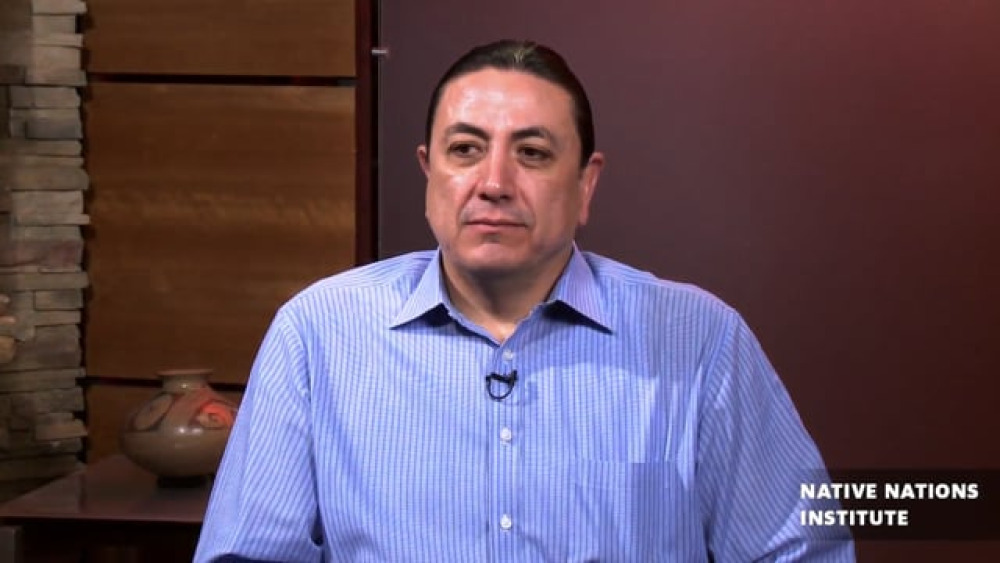
Chairman Dave Archambault II: Laying the Foundation for Tribal Leadership and Self-governance
Chairman Archambault’s wealth and breadth of knowledge and experience in the tribal labor and workforce development arena is unparalleled. He currently serves as the chief executive officer of one of the largest tribes in the Dakotas, leading 500 tribal government employees and overseeing an array…
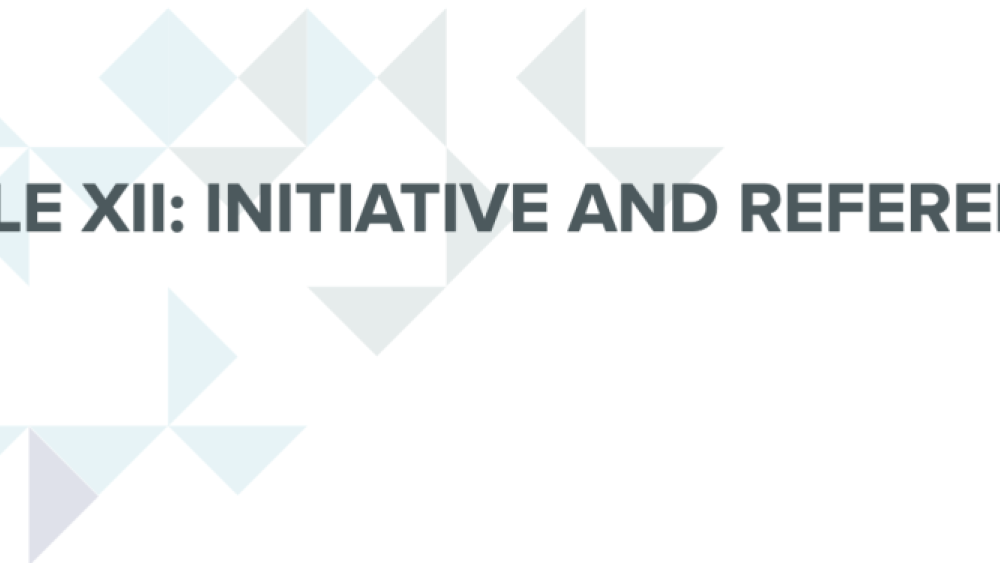
Kaw Nation: Initiative & Referendum Excerpt
ARTICLE XII: INITIATIVE AND REFERENDUM Section 1. The citizens of the Kaw Nation reserve unto themselves the power of initiative and referendum. Section 2. Initiative. Any issue shall be submitted for an initiative election pursuant to this section upon receipt of a petition containing valid…
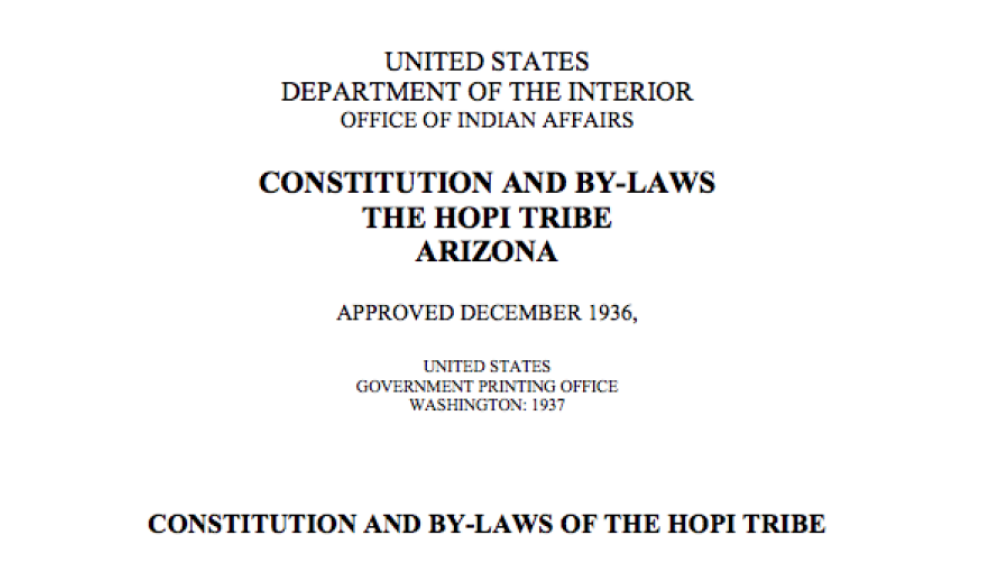
Hopi Tribe: Governmental Structure Excerpt
ARTICLE III-ORGANIZATION SECTION 1. The Hopi Tribe is a union of self-governing villages sharing common interests and working for the common welfare of all. It consists of the following recognized villages: First Mesa (consolidated villages of Walpi, Shitchumovi, and Tewa). Mishongnovi. Sipaulavi…
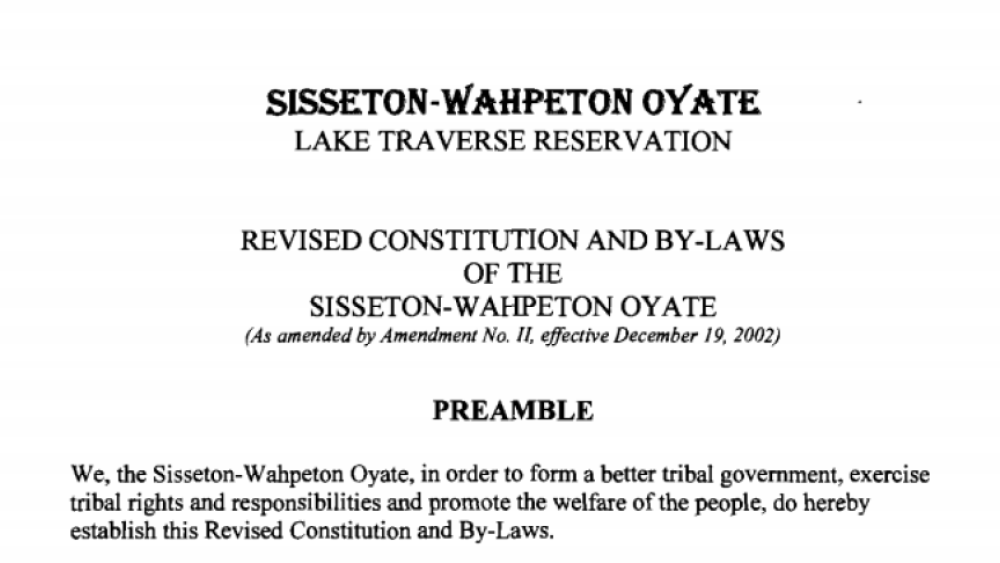
Sisseton-Wahpeton Oyate: Elections Excerpt
ARTICLE V - NOMINATIONS AND ELECTIONS SECTION 1. The first election of the Council under this Revised Constitution shall be called, held and supervised by the present Council within one hundred twenty (120) days after its approval. Successful candidates at this first election shall assume office…
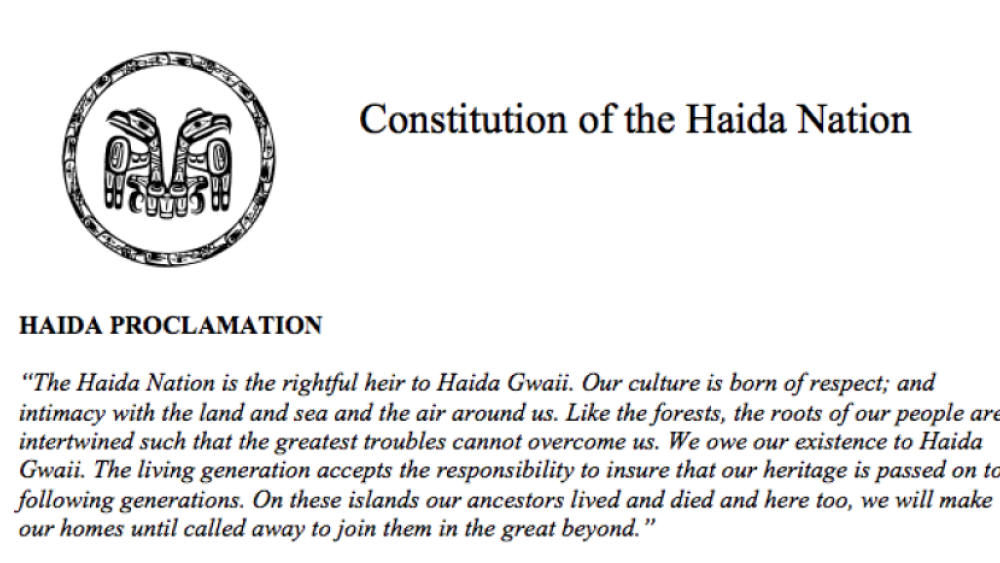
Haida Nation: Jurisdiction/Territory Excerpt
ARTICLE 1 HAIDA TERRITORIES A1.S1 The Territories of the Haida Nation include the entire lands of Haida Gwaii, the surrounding waters, sub-surface and the air space. The waters include the entire Dixon Entrance, half of the Hecate Straits, halfway to Vancouver Island and Westward into the abyssal…
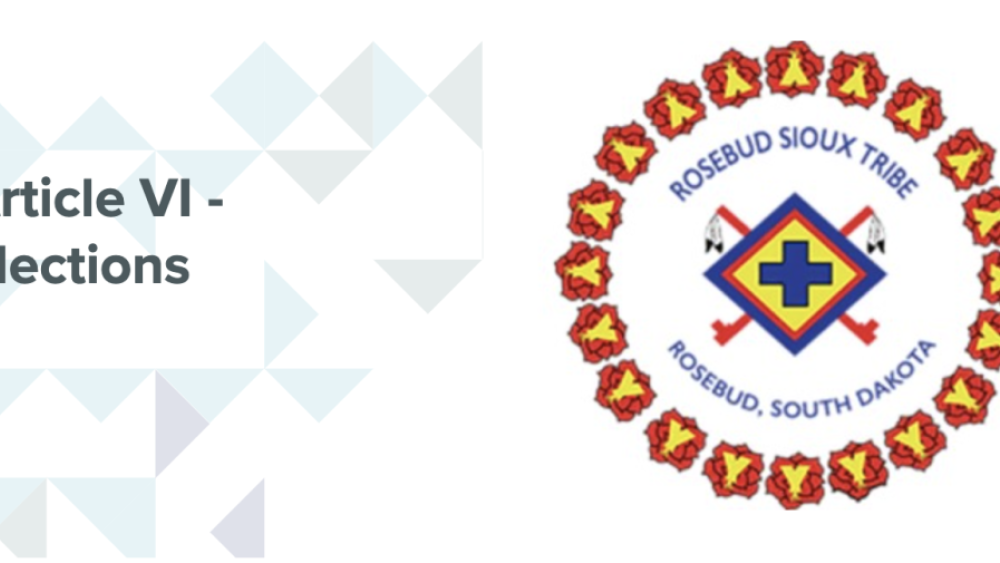
Rosebud Sioux Tribe: Elections Excerpt
Article VI - Elections Section 1. Any enrolled member of the Rosebud Sioux Tribe, at least eighteen (18) years of age, who has resided for at least thirty (30) days immediately prior to the election day in the district in which he anticipates to vote, is qualified to vote. (Amendment XIV effective…
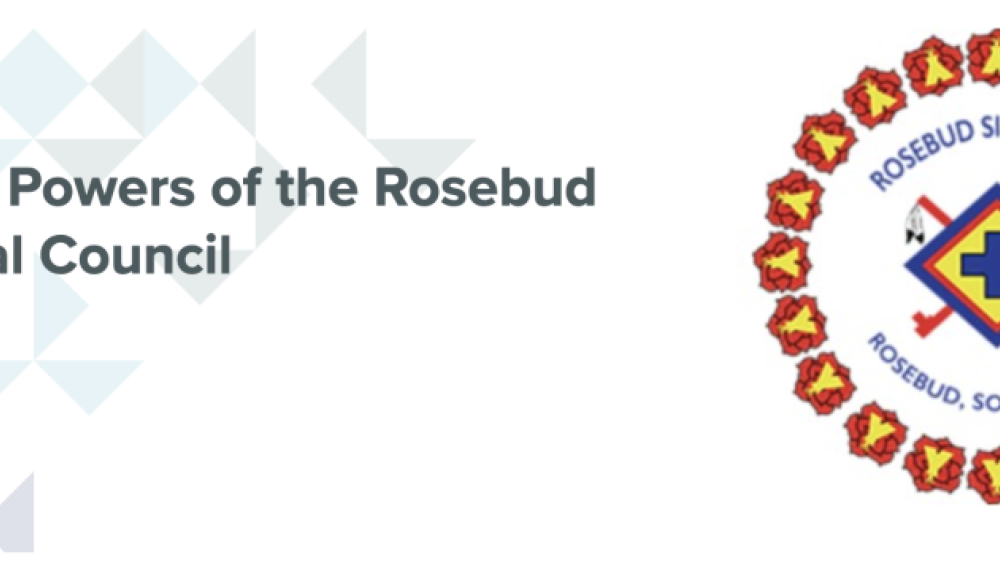
Rosebud Sioux Tribe: Legislative Functions Excerpt
Article IV - Powers of the Rosebud Sioux Tribal Council Section 1. Enumerated powers - The Council of the Rosebud Sioux Tribe shall exercise the following powers subject to any limitations imposed by the statutes or the Constitution of the United States, and subject further to all express…
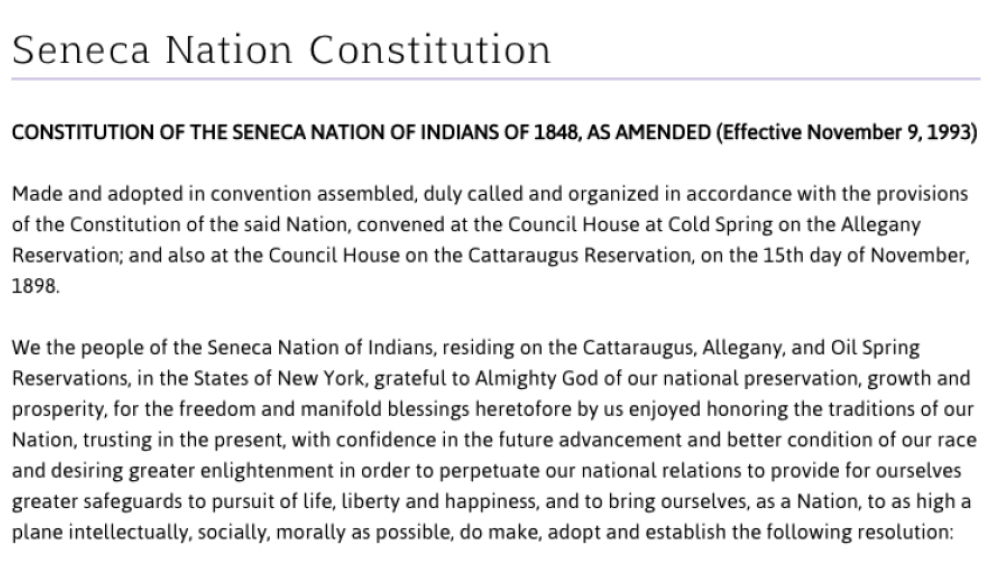
Seneca Nation: Terms of Office Excerpt
SECTION I. Our government shall have a legislative, executive, and judiciary department. The legislative power shall be vested in a Council of sixteen members, who shall be known and called the Councillors of the Seneca Nation of Indians, eight Councillors elected to the Council shall be from the …
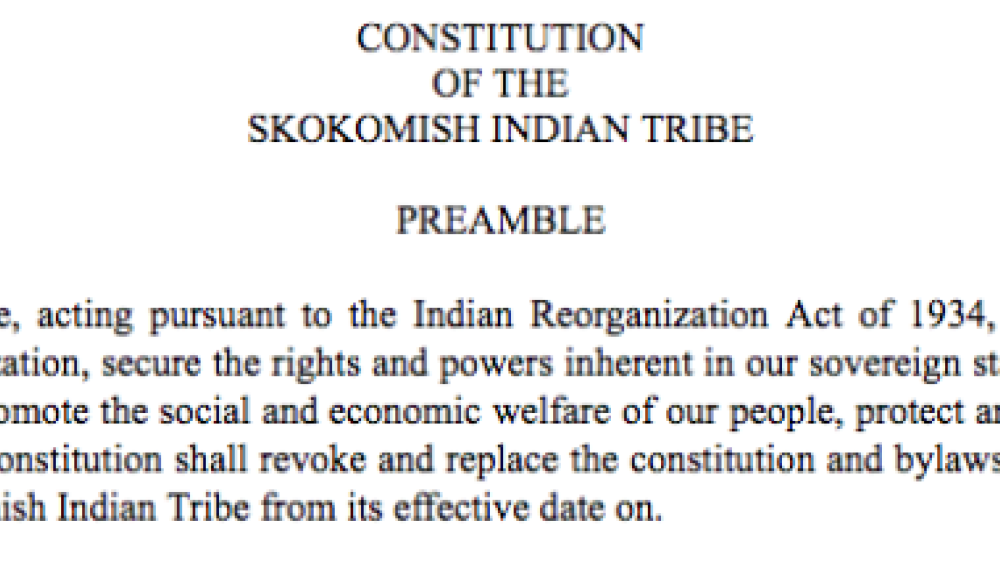
Skokomish Indian Tribe: Terms of Office Excerpt
ARTICLE IV - TRIBAL COUNCIL Sec. 4. Terms of Office Each Tribal Council member shall be elected for a term of four (4) years. Terms of office for the seven (7) council members shall be staggered, two (2) members being elected each year for three (3) consecutive years and one (1) member being…
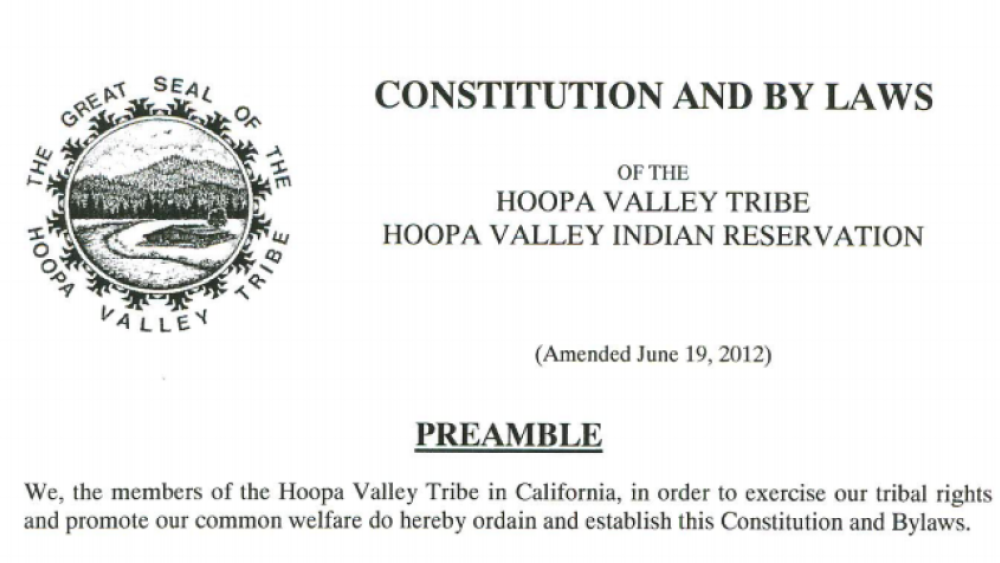
Hoopa Valley Tribe: Recall, Removal, & Vacancies Excerpt
ARTICLE VII - VACANCIES, REMOVAL, RECALL AND REFERENDUM Section 1. If any member of the Tribal Council or other elected official shall die, resign, be removed from office or shall be found guilty while in office of a felony or misdemeanor involving moral turpitude in any Indian, State or Federal…
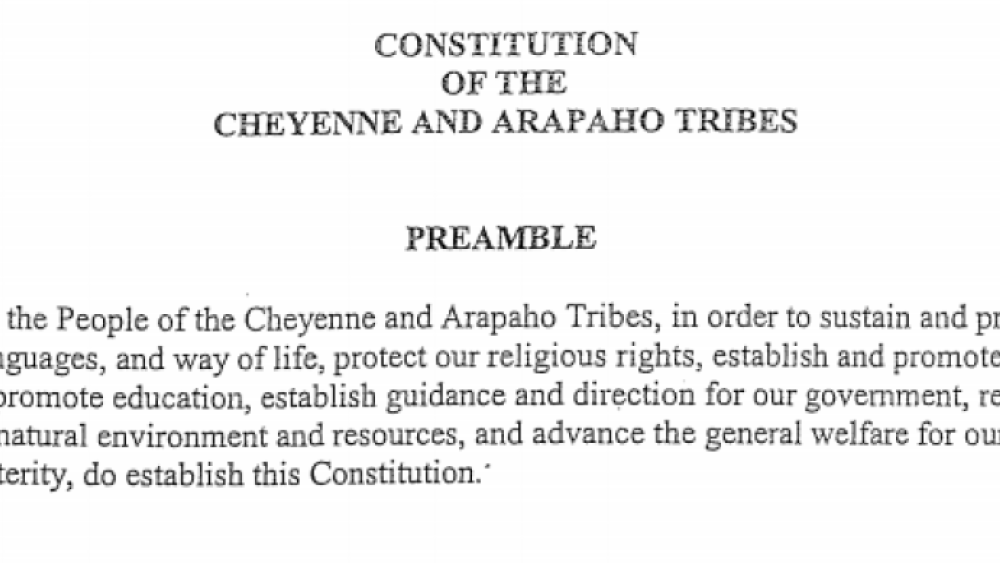
Cheyenne and Arapaho Tribes: Legislative Functions Excerpt
ARTICLE VI - LEGISLATIVE BRANCH Section 1. Composition. The Legislative Branch shall be comprised of one Legislature. The Legislature shall consist of four Cheyenne Districts and four Arapaho Districts. Each Cheyenne District shall have one Cheyenne Legislator and each Arapaho District shall have…
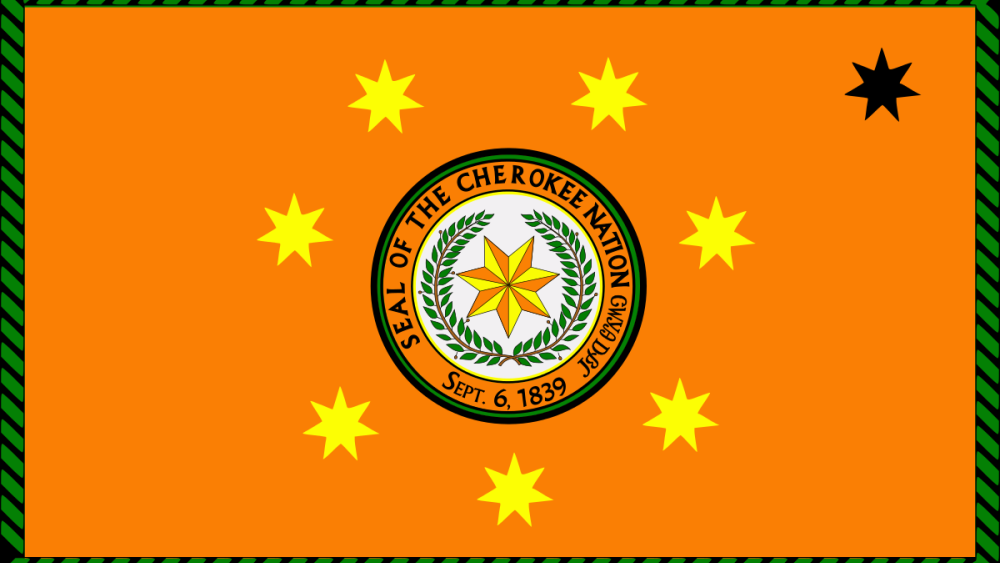
Cherokee Nation: Amendments Excerpt
Article XV. Initiative, Referendum and Amendment. Section 9. No convention shall be called by the Council to propose a new Constitution, unless the law providing for such convention shall first be approved by the People on a referendum vote at a regular or special election. Any amendments,…
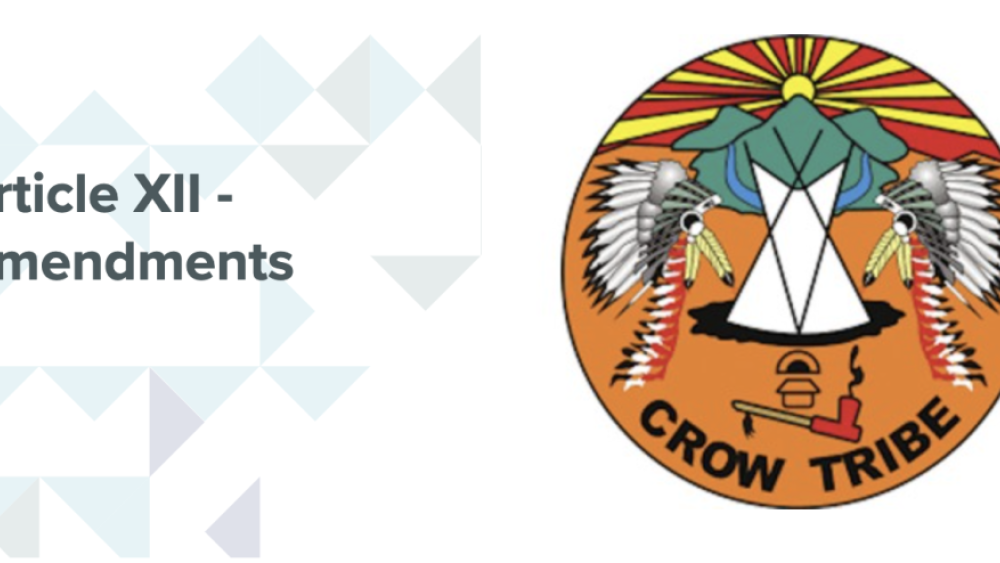
Crow Tribe: Amendments Excerpt
ARTICLE XII - AMENDMENTS This Constitution may be amended by a two-thirds (2/3) vote ofthe Crow Tribal General Council provided that at least thirty percent (30%) of the Crow Tribal General Council vote in an election called for the purpose of amending the Constitution. The process to propose…
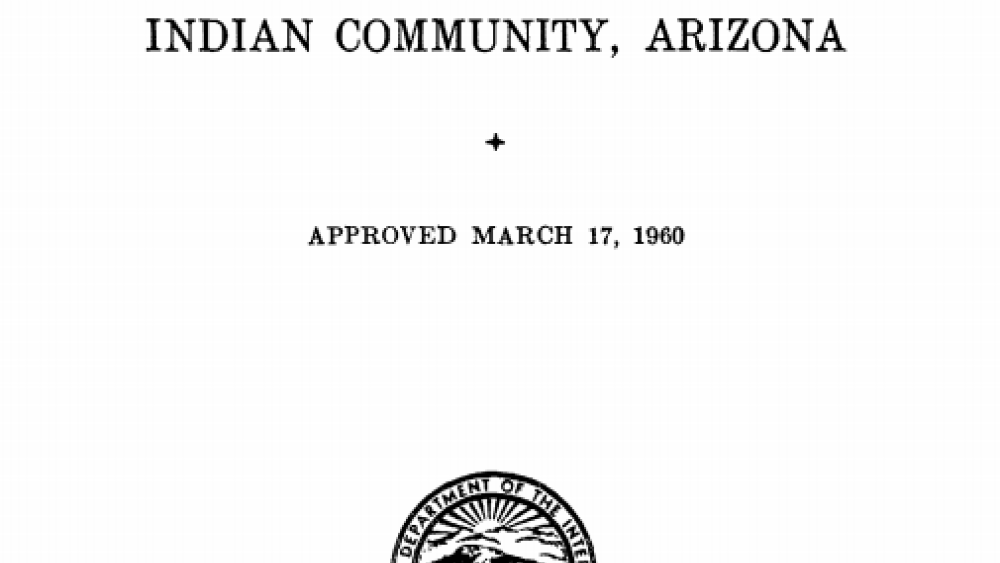
Gila River Indian Community: Legislative Functions Excerpt
ARTICLE VI–QUALIFICATIONS OF OFFICERS Section 1. No person shall be elected or hold office as Governor, Lieutenant Governor, Chief Judge, Associate Judges, or Councilmen unless he (1) is a member of the Community; (2) has reached the age of twenty-five (25) years; (3) has been living in the…
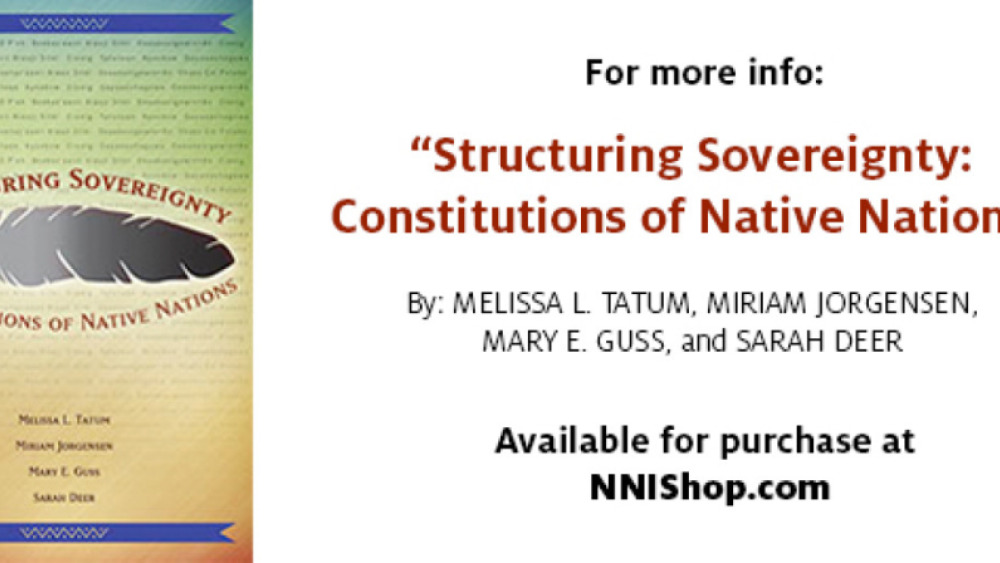
Confederated Salish and Kootenai Tribes, Constitutional Bylaws: Legislative Functions Excerpt
Article II - Ordinances and ResolutionsSection 1. All final decisions of the Council on matters of general and permanent interest to the members of the Confederated Tribes shall be embodied in ordinances. Such ordinances shall be published from time to time for the information and education of the…
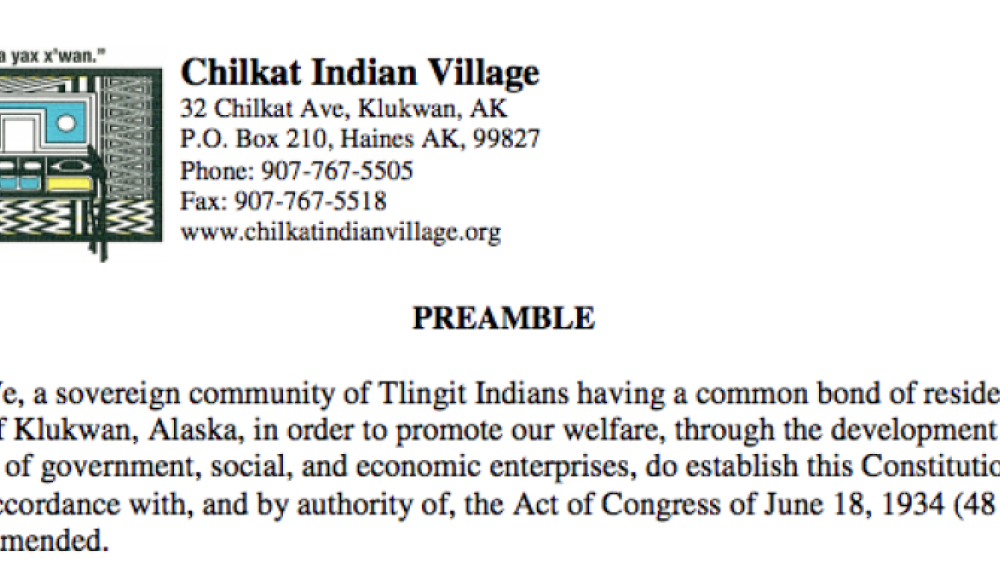
Chilkat Indian Village: Legislative Functions Excerpt
ARTICLE V — POWERS OF THE VILLAGESection 1. The Council shall have the power: (n) To adjudicate matters of a civil and criminal nature, arising within the Tribe’s jurisdiction and to establish tribal courts if deemed necessary for that purpose. (o) To enact ordinances and take any other action…
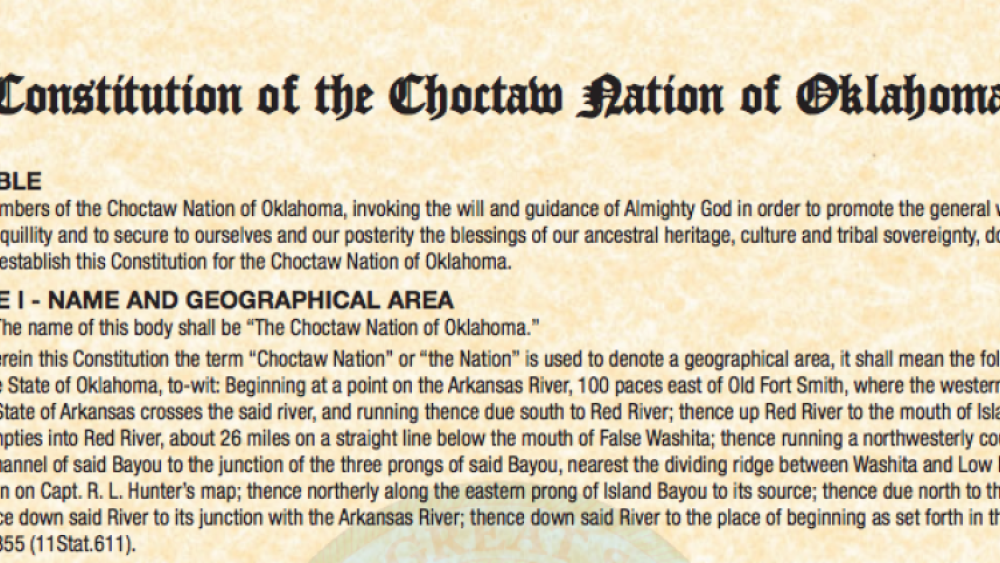
Choctaw Nation of Oklahoma: Judiciary Functions/Dispute Resolution Excerpt
ARTICLE XII - JUDICIAL DEPARTMENTSection 1. The judicial authority of the Choctaw Nation shall be vested in a Tribal Court which shall consist of three (3)-member Court appointed by the Chief with the advice and consent of the Tribal Council. One (1) such member,the presiding judge, shall be a…
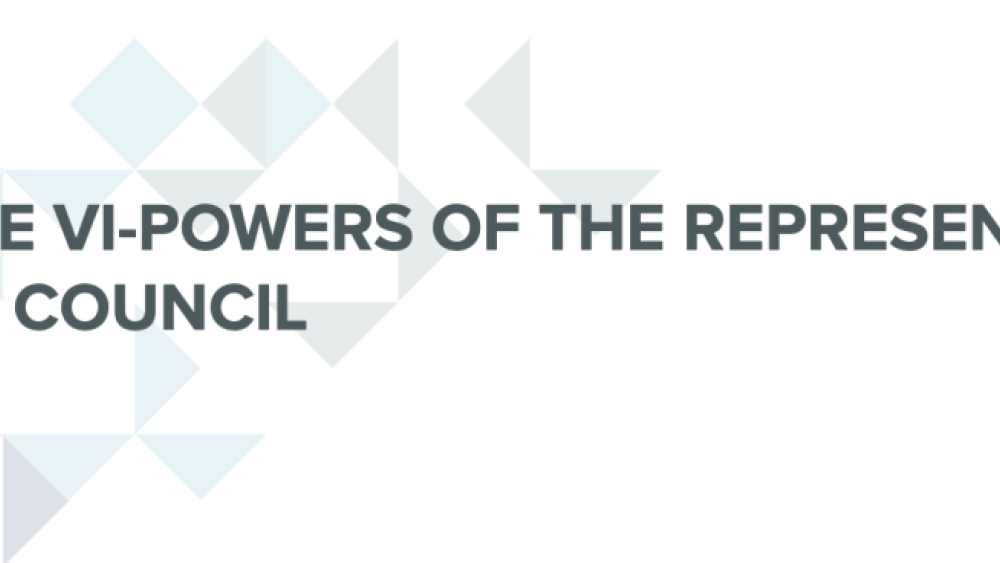
Jicarilla Apache Tribe: Judiciary Functions/Dispute Resolution Excerpt
ARTICLE VI-POWERS OF THE REPRESENTATIVE TRIBAL COUNCILSECTION 4. Peace and Order.-The Council may make regulations, subject to review by the Secretary of the Interior, to protect the peace, safety, morals, and general welfare of the reservation, to provide a means of settling disputes, and to…
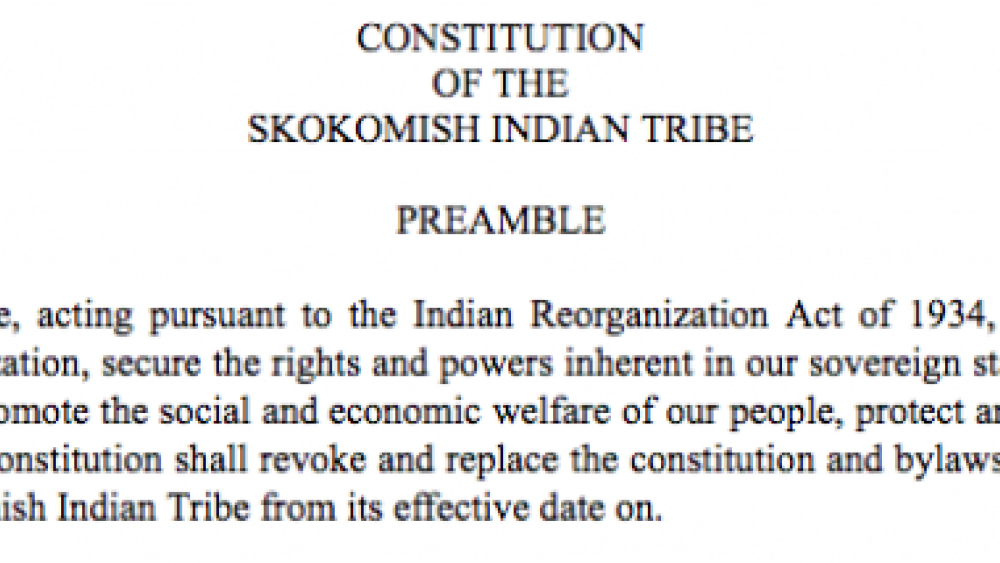
Skokomish Indian Tribe: Initiative & Referendum Excerpt
ARTICLE VIII - INITIATIVE Section 1. Right of Initiative. Voters of the Skokomish tribe shall have the right to cause a vote of the General Council on any legislation proposed by the voters and on any proposed or enacted ordinance or resolution of the Tribal Council. No later than thirty (30) days…
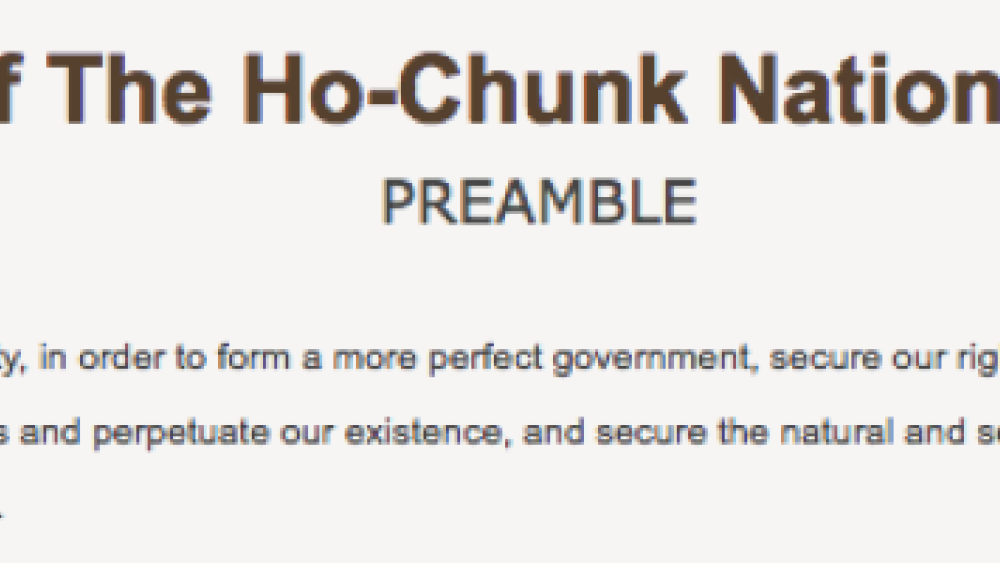
Ho-Chunk Nation: Governmental Structure Excerpt
ARTICLE III - ORGANIZATION OF THE GOVERNMENTSection 1. Sovereignty. The Ho-Chunk Nation possesses inherent sovereign powers by virtue of self-government and democracy.Section 2. Branches of Government. The government of the Ho-Chunk Nation shall be composed of four (4) branches: General Council,…
